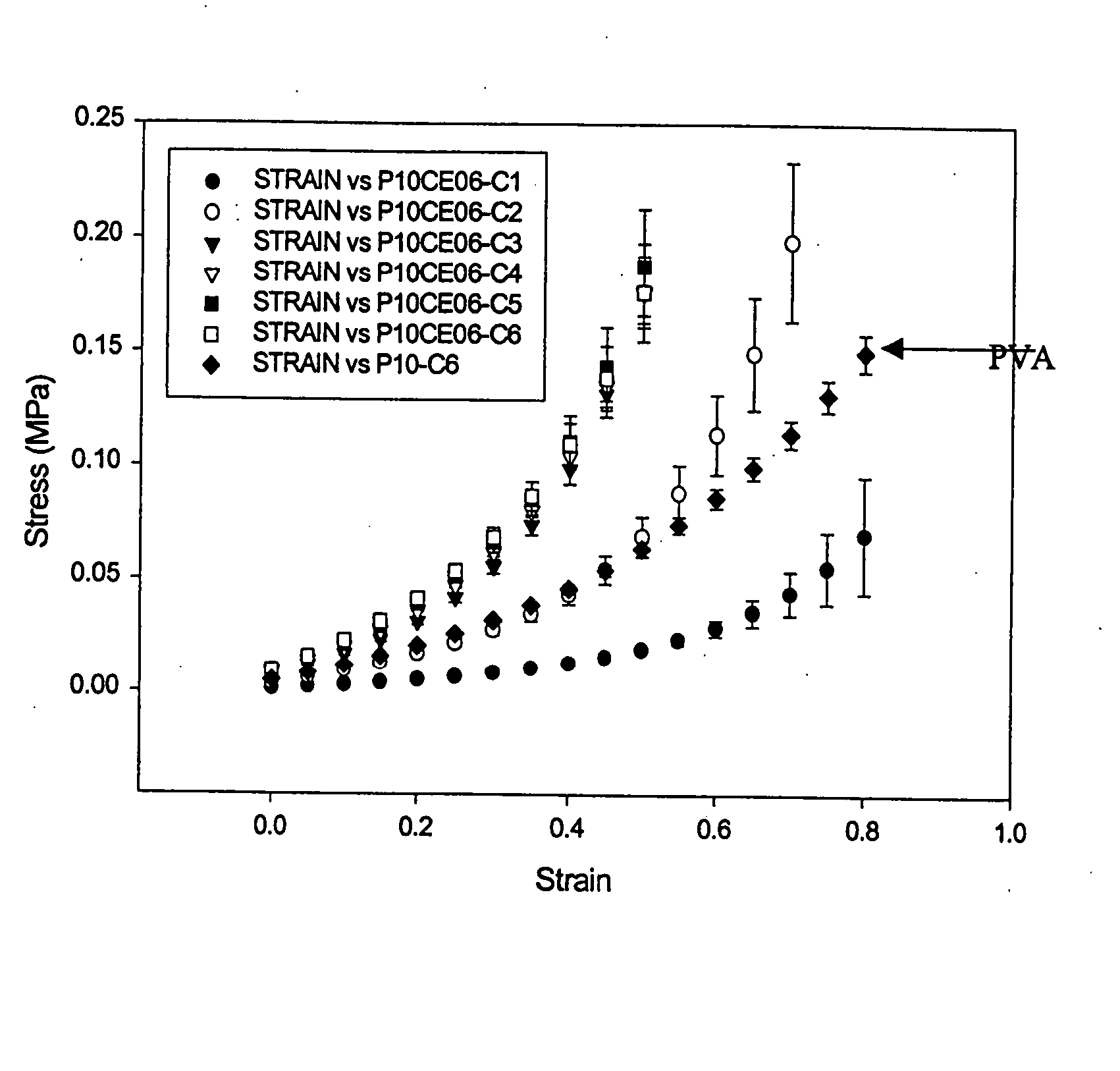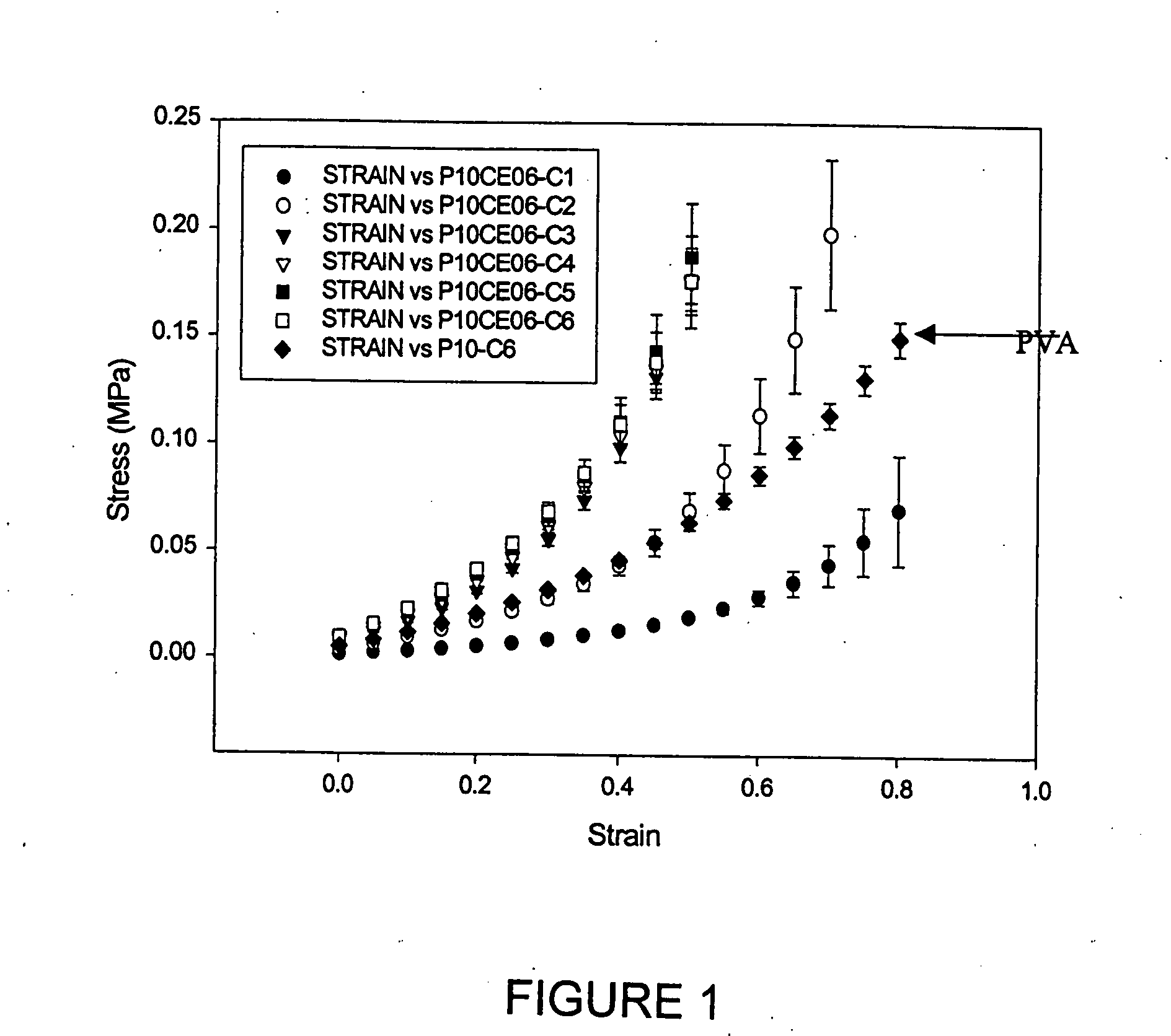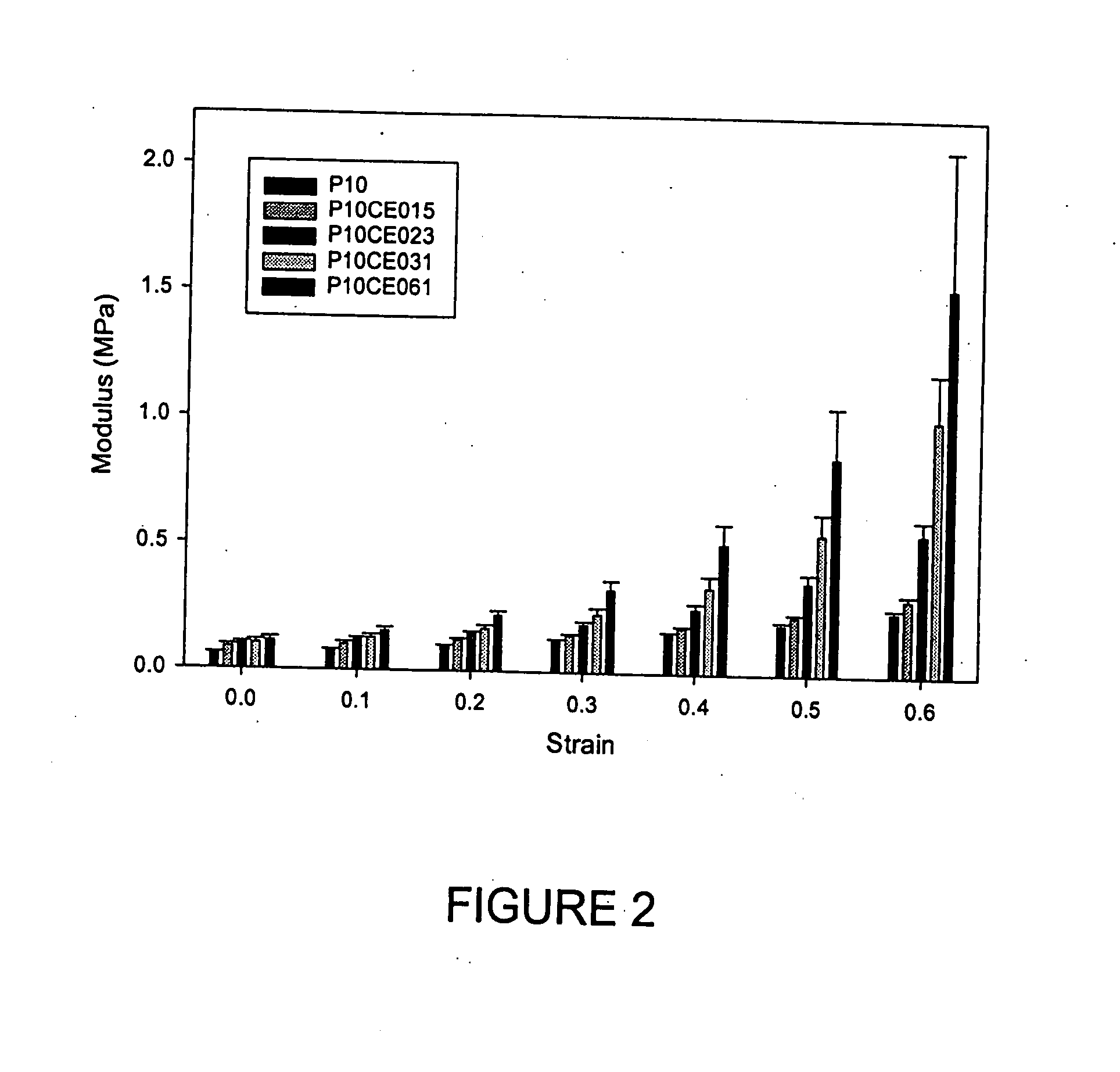Process for producing poly(vinyl alcohol)-bacterial cellulose nanocomposite
a technology of cellulose nanocomposite and polyvinyl alcohol, which is applied in the field of composite materials, can solve the problems of limited durability, patient risk of thromboembolism, and “vein graft diseas
- Summary
- Abstract
- Description
- Claims
- Application Information
AI Technical Summary
Benefits of technology
Problems solved by technology
Method used
Image
Examples
examples
PVA Solution Preparation
[0043] The PVA solution prepared was 5-15% by weight. This concentration was chosen as reference for the purpose of comparison against previous results and among different PVA composite materials. The procedure for PVA preparation was consistent with the protocol implemented by Wan [36]. The PVA used in all the experiments was purchased from Aldrich Chemical Company (Catalogue No. 36,306-5). A preferred PVA average molecular weight range (Mw) was 124,000 to about 186,000, 99+% hydrolysed and was received in powder form. The PVA solution in distilled water was prepared in a Pyrex resin flask combined with a reflux column to prevent excess vapor pressure build-up and water loss. The solution was heated between 2-3 hours at a temperature of around 80° C. When all the PVA had gone into a clear jelly-like solution, the flask was removed from the heating mantle.
[0044] More broadly, the polyvinyl alcohol (PVA) may have a molecular weight in a range from about 100...
PUM
| Property | Measurement | Unit |
|---|---|---|
| temperatures | aaaaa | aaaaa |
| temperatures | aaaaa | aaaaa |
| air flow rate | aaaaa | aaaaa |
Abstract
Description
Claims
Application Information
 Login to View More
Login to View More - R&D
- Intellectual Property
- Life Sciences
- Materials
- Tech Scout
- Unparalleled Data Quality
- Higher Quality Content
- 60% Fewer Hallucinations
Browse by: Latest US Patents, China's latest patents, Technical Efficacy Thesaurus, Application Domain, Technology Topic, Popular Technical Reports.
© 2025 PatSnap. All rights reserved.Legal|Privacy policy|Modern Slavery Act Transparency Statement|Sitemap|About US| Contact US: help@patsnap.com



